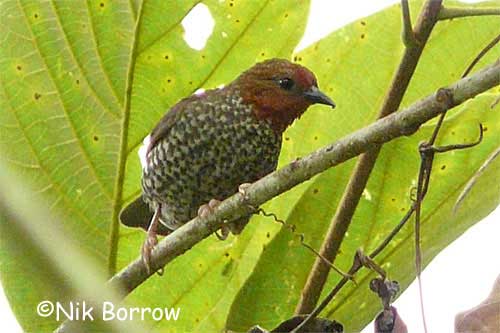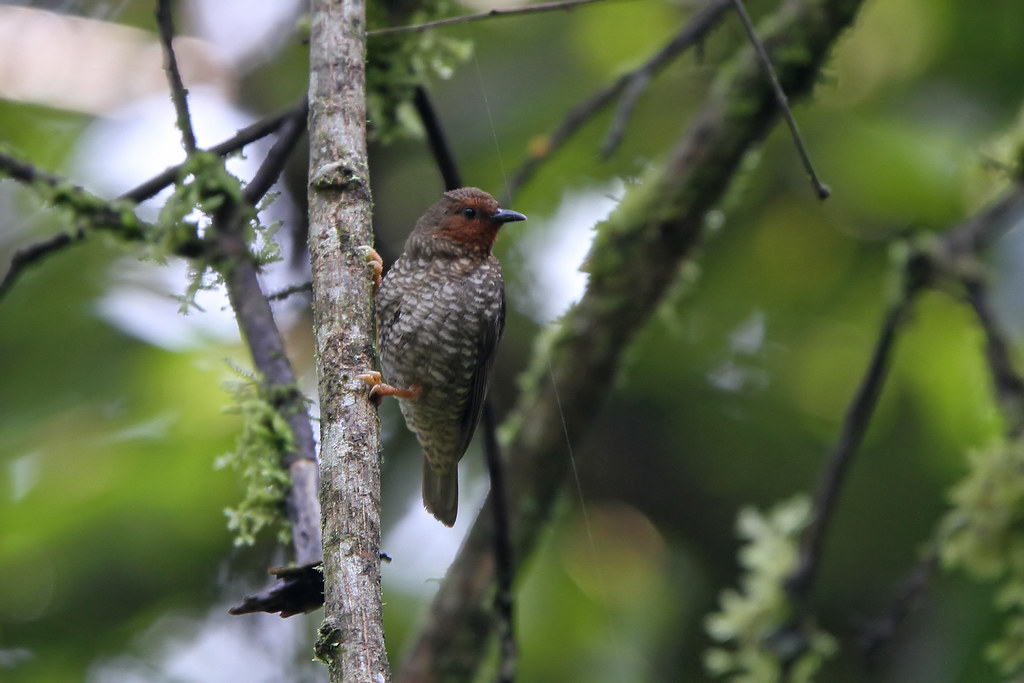Woodhouse's Antpecker
Ants Picker ( Parmoptila woodhousei )
The ants Picker ( Parmoptila woodhousei ) is an African species of the family of finches. In addition to the nominate subspecies was the Parmoptila woodhousei ansorgei Hartert, 1904, described.
Description
The ants Picker reaches a body length of eleven inches. The male has the upper head very small brown feathers after the moult have fresh red, otherwise pale brown tips. The eyes reins are blackish. The body top is olive-brown with slightly lighter shaft strokes. The wing coverts are reddish - brown lined. The body bottom is up to the under tail-coverts whitish with dense olivgrauen spots. The eyes are reddish brown, the beak is black and the feet are flesh-colored. Females show a similar plumage the males, but among them lack the red tips of the front springs.
Possible confusion exist only with the Jameson - ants picker. The males of the ant pickers differ from those of the Jameson - Ameispenpickers by their spotted body bottom, it also lacks the red spot on the forehead. The females also have a spotted and striped underparts not. You also missing patches on the throat.
Distribution and habitat
Ants Picker occur by two species in West Africa. Type locality is the Camma River in Gabon. The range of the subspecies Parmoptila woodhousei woodhousei extends from southeastern Nigeria to the southwest of the Central African Republic and to the west of the Republic of Congo. The subspecies Parmoptila woodhousei ansorgei occurs exclusively in the northwest of Angola.
Ants Picker primarily inhabit lowland forests, dense and older secondary forests, swamp forests and gallery forests. Hold primarily to in the understory. On the islands of Ivindo between seven and eight breeding pairs per square kilometer occur.
Way of life
Ants picker come singly, in pairs or in small family groups. They are often associated with other insectivorous birds. Basically, the ants Picker is a shy and inconspicuous bird.
Main food of ants Picker are arboreal ants. Branches, leaves and bark are searched by ants pickers systematically for insects. They break up and ant nests.
The nests are twenty centimeters high and a foot wide accumulations of grass and leaves. The entrance is located at the Nistseite. The nest interior is lined with plant fibers. The nest consists of three to four white -shelled eggs. The incubation period varies depending on the area of distribution. In Nigeria ants Picker breeds from March to May in Gabon year-round and in Angola in April.
Attitude
In contrast to the vast number of finch species of ants Picker is rarely kept in captivity. As a dietary specialist, he has special needs that require an attitude very difficult. Apparently ants picker throughout the year depend on living ants as food.
Subspecies
There are described two subspecies, which differ in their coloration and their area of distribution:
- Parmoptila woodhousei woodhousei Cassin, 1859
- Parmoptila woodhousei ansorgei Hartert, E, 1904









